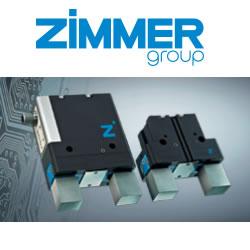Is your robot battery up to the task?
The very purpose of using a robot to automate a process relies on the robot being accurate and repeatable. As robots move from environments where they were traditionally used behind cages to open environments, it is important that their power solutions keep up. Here, Michele Windsor, global marketing manager at global battery specialist Ultralife Corporation, explains why plant managers need to consider smart batteries for industrial and service robots.
Since the first industrial robot was created for General Motors' assembly line by American inventor George Devol in 1961, industrial robots have quite literally gone from strength to strength. Whereas Devol's five-axis robot could deliver a payload capacity of 250kg, modern six-axis robots are capable of delivering payloads of around 1,300kg with a repeatability of ±0.08mm.
Although Devol's friend, scientist and writer Isaac Asimov, coined the term robotics and wrote the fictional three laws of robotics — primarily that "a robot may not injure a human being or, through inaction, allow a human being to come to harm" — unless the engineer responsible for creating the robot chooses to program in the three laws, heavy industrial robots pose a danger to human workers.
It is for this reason that, for most of their history, industrial robots have been placed behind cages, in no-go zones, out of the reach of human workers. Only now, with the advent of artificial intelligence and recent advances in smart proximity sensing, motor technology, actuation, gearing and braking, are we seeing the rise of desktop and collaborative robots (CoBots) capable of working alongside humans.
While these advances have improved the repeatability of robots, accuracy can still be a problem. This is why most robots need to be recalibrated each time their application or tooling is changed. Calibration governs set parameters in the kinematic structure of the robot, such as the relative position of joints (mastering), tool-centre-point positions (TCP) and joint lengths.
In the event of a power failure, a robot can lose its calibration and mastering values unless the robot backup battery is up to the task. If the backup battery also fails, the robot controller will have to be manually reprogrammed by re-uploading the calibration file to the robot once power returns.
To solve this problem, Ultralife Corporation has designed a range of primary, non-rechargeable, Lithium Thionyl Chloride and Lithium Manganese Dioxide cells and batteries that provide long term power to robot control systems.
The batteries ensure that critical configuration information is safely retained if external power is lost. The primary batteries also offer a service life of five to ten years so that engineers do not have to replace them every year.
Unlike industrial robots that rely predominantly on mains power, service robots use portable battery power and are increasingly being used in warehouse, commercial, hospital and transport environments.
Defined by the International Federation of Robotics, "a service robot is a robot which operates semi or fully autonomously to perform services useful to the well-being of humans and equipment, excluding manufacturing operations."
Whether it's a guided autonomous vehicle in a factory, a wheeled-platform robot for moving shelves and pallets, a trolley in a hospital or assisted-tugs at airports, the power requirements for service robots can vary drastically.
To deliver the next generation of batteries for service robots, Ultralife Corporation has developed a range of secondary, rechargeable, batteries designed to power a variety of devices. These range from small, compact units for wireless handheld controllers, to large multi-kilowatt systems for powering remotely operated vehicles (ROVs) in extreme environments.
Both ranges for industrial and service robots are built using smart circuit electronics technology, which provides users with critical information including cycle count, remaining run-time and remaining capacity.
As robotic developments continue to advance at a phenomenal rate, original equipment manufacturers and users of industrial and service robots need to ask themselves the crucial question: is my battery up to the task?
Featured Product

